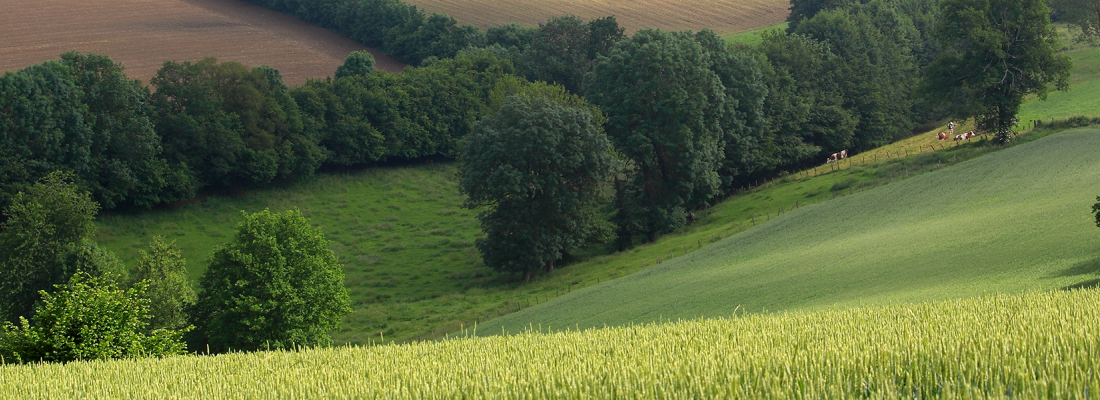Agroecology Reading time 2 min
Making room for grasslands in cropping systems
Published on 05 November 2021

Diversifying field cropping systems is key to increasing their sustainability. One option is to integrate temporary grasslands into crop rotations. However, in most foresight scenarios that aim to feed the world sustainably, grasslands are relegated to non-arable areas used exclusively for grazing animals, so that arable areas can be entirely given over to growing food for humans. That is why the benefits of grasslands in crop rotations must be brought to the fore. To do so, INRAE researchers have synthesized the knowledge available on the agronomic and environmental services provided by temporary grasslands, according to the type of grassland and how they are managed.
“Correctly incorporated into rotations, temporary grasslands provide a wide range of services: soil conservation, nutrient provision and recycling, soil water retention, biological regulation of pests and weeds”, explains Guillaume Martin, research director at AGIR. “Grasslands also provide services that benefit society: water purification, climate regulation, and habitat provision that fosters biodiversity”, he adds.
Reaping these benefits requires the appropriate incorporation of temporary grasslands into crop rotations, in terms of both space and time. Short of that, it can have an adverse effect.
Adapting the selection of grassland species
To maximise the benefits of grasslands and minimise any negative effects, plant breeding programmes must be tailored to give preference to a mix of grassland species that provide multiple services.
“Varietal selection and assessments are mostly carried out on pure plant stands and for a limited number of services”, says Guillaume Martin. “We need to work on a mix of species and varieties through breeding programmes that focus on multi-service grasslands.”
It is also necessary to generate knowledge on the innovative ways of incorporating grasslands into crop rotations. For example, sowing grasslands under cereal cover or maintaining semi-permanent grassland cover where cereals are sown, and that take over to cover the ground once the cereal crop is harvested.
To better grasp the many agronomic and environmental services temporary grasslands provide, work still has to be done to integrate the effects, in terms of time and space, of the different ways of managing grasslands.
Martin, G., Durand, J.L., Duru, M., Gastal, F., Julier, B., Litrico, I., Louarn, G., Médiène, S., Moreau, D., Valentin-Morison, M., Novak, S., Parnaudeau, V., Paschalidou, F., Vertès, F., Voisin, A.S., Cellier, P., Jeuffroy, M.H., 2020. Role of ley pastures in tomorrow’s cropping systems. A review. Agronomy for Sustainable Development 40, 17. https://hal.archives-ouvertes.fr/hal-02927195/
Martin, G., Durand, J.L., Duru, M., Gastal, F., Julier, B., Litrico, I., Louarn, G., Médiène, S., Moreau, D., Valentin-Morison, M., Novak, S., Parnaudeau, V., Paschalidou, F., Vertès, F., Voisin, A.S., Cellier, P., Jeuffroy, M.H., 2019. Do tomorrow’s diversified cropping systems need ley pastures? Proceedings of the European Conference on Crop Diversification, Budapest (Hongrie), 19-21 September 2019, pp. 128-129. https://hal.inrae.fr/hal-02737358
